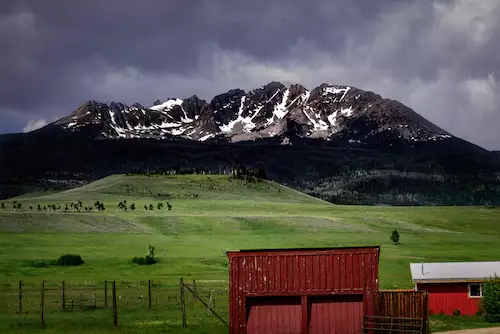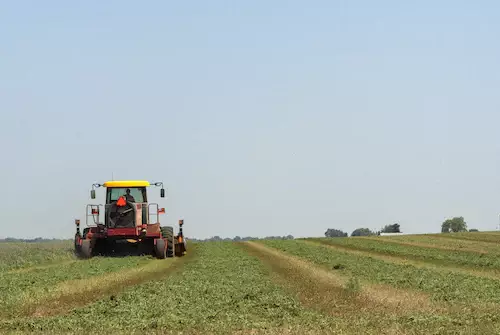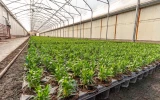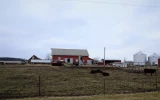Can You Build On a Smallholding? (What Permits You'll Need)
Maybe you want to add a barn, a house, or other structures, but you’re not sure what permits you’ll need. Building on a smallholding may require permits depending on local regulations. This guide will help you determine what permits you need, where to get them, and how to make sure everything goes smoothly.
To build on a smallholding, you will need to obtain permits from your local council, including Building Regulations approval and planning permission. You may need to seek approval from the Environment Agency and local authorities if your project will involve construction over water or involving hazardous materials.
Let's explore the process for building on a smallholding, the types of permits you’ll need, and the requirements for obtaining them.
Summary
- Starting a smallholding requires a few permits and licenses, such as a planning permit, an agricultural license, and a business license.
- Depending on the size of the smallholding, additional licenses may be needed for activities such as keeping livestock or growing crops.
- It is important to check with the local government to determine what permits are needed for the specific smallholding project.

On this page:
You Can Build On A Smallholding With Permits
To build on a smallholding depends on the size of the smallholding, the local planning regulations, and the type of building that you would like to construct. Generally, you can build on smallholding though there are some restrictions.
If your smallholding is under five hectares, you will need permission from your local planning authority to build on it. This permission will depend on the type of building, its size, and the impact it is likely to have on the local environment.
For example, if you wish to build a home, you will need to meet the requirements of the local planning authority, such as the type of materials used, the size of the building, and the impact it will have on the local environment.
If you want to build an agricultural building, such as a barn or shed, you will need to meet certain requirements, such as ensuring that it is properly ventilated and that it does not cause a nuisance to your neighbors.
Finally, if you would like to build a business or industrial building on your smallholding, you will need to contact your local planning authority to discuss the requirements and the impact it is likely to have on the local environment.

Permits Needed To Build On A Smallholding
Here are the permits that you should get before building infrastructure in your smallholding area.
1. You will need to obtain permits from your local council.
Depending on the size of the smallholding and the type of construction, you may need to apply for a range of permits from your local council. You typically need to apply for:
- planning permission,
- building regulations approval, and
- other permits such as Party Wall agreements
It is important to check the regulations for your local area, as requirements may differ. You may need to apply for a variety of permits, such as:
- a waste removal permit,
- a water connection permit,
- a road closure permit, or
- a permit for erecting a fence
If the smallholding is located in a conservation area, you may need to apply for extra permits. You may also need to apply for a permit to access your local council’s services, such as electricity and gas.
You may need to submit detailed plans of the proposed construction to your local council. This should include details of the materials you plan to use, the size of the building, and the location. Before you can start building, you may need to pay a fee to your local council.
2. You may require Building Regulations approval and planning permission
Building Regulations approval may be required to build on a smallholding if the construction or alteration involves the erection or extension of a building or if the works involve structural alterations, such as a change of use or an alteration to the external walls of an existing building.
Planning permission may also be required to build on a smallholding if the proposed works could affect the surrounding environment, or if the development has the potential to be harmful to the area. Planning permission may also be required for the erection of certain types of structures, such as greenhouses, livestock shelters, or agricultural buildings.
3. You may need to seek approval from the Environment Agency and other local authorities
If your project will involve construction over water or involving hazardous materials, approval from the Environment Agency and other local authorities is needed. The Environment Agency will need to approve any construction over or near water, or involving hazardous materials, that takes place on a smallholding.
This is to ensure that the construction does not harm the environment. The Environment Agency will need to be provided with detailed plans of the construction project and will want to know how the materials used will be handled and stored safely. The Environment Agency will also need to be provided with information on how the construction will be managed and supervised.
In addition to seeking approval from the Environment Agency, you may also need to seek approval from other local authorities (e.g., the local county council) if the construction project involves any public land or is close to a protected area.
The local authority will need to be provided with information on the project, including plans and drawings, and may need to undertake a site visit to assess the impact of the project. The local authority may also need to be provided with evidence that the construction is in line with local planning regulations.

4. You should also contact your local fire and rescue service and utility companies
You should contact your local fire and rescue service to find out what safety measures need to be taken in the event of a fire on your smallholding and to check whether any special regulations apply to your project.
- You should contact your local utility companies to check if any special regulations need to be followed to build on your smallholding, such as obtaining permission from local authorities.
- You should contact your local water board to check if there are any special regulations regarding the installation of a water supply on the property.
- You should contact your local waste management company to find out what regulations you must follow when disposing of any waste from the smallholding.
- You should contact your local electricity provider to check if there are any regulations regarding the installation of electricity on the property.
- You should contact your local gas supplier to check if there are any regulations regarding the installation of gas on the property.
5. You may need to obtain a certificate of lawful development from your local council
To prove that your project complies with the applicable regulations, obtaining a certificate of lawful development from your local council is a must.
- A completed application form for a Certificate of Lawful Development, including details about the proposed development, the address of the smallholding, and any relevant plans or drawings
- Payment of the application fee
- Evidence that the development is consistent with the relevant planning policy, such as a Design and Access Statement
- Evidence that the proposed development complies with the Building Regulations and any other relevant legislation
- Evidence that the proposed development is consistent with the character of the area, such as photographs of the area
- Evidence that the proposed development is consistent with the requirements of any relevant conservation area, such as a historic building survey
- Evidence that the proposed development does not adversely affect the rights of any of the neighboring properties, such as a legal agreement
- Evidence that the proposed development does not cause any loss of amenity to the neighborhood, such as a noise survey or a daylight and sunlight report



